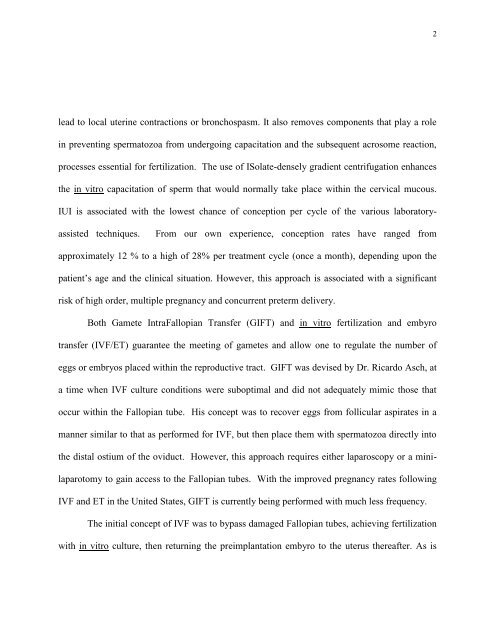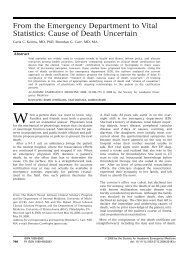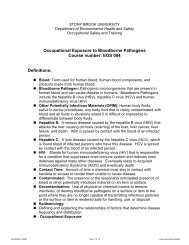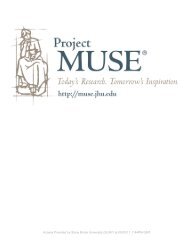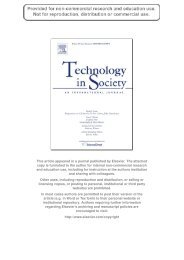Technological & Ethical Issues in Laboratory-Assisted Reproduction
Technological & Ethical Issues in Laboratory-Assisted Reproduction
Technological & Ethical Issues in Laboratory-Assisted Reproduction
Create successful ePaper yourself
Turn your PDF publications into a flip-book with our unique Google optimized e-Paper software.
2<br />
lead to local uter<strong>in</strong>e contractions or bronchospasm. It also removes components that play a role<br />
<strong>in</strong> prevent<strong>in</strong>g spermatozoa from undergo<strong>in</strong>g capacitation and the subsequent acrosome reaction,<br />
processes essential for fertilization. The use of ISolate-densely gradient centrifugation enhances<br />
the <strong>in</strong> vitro capacitation of sperm that would normally take place with<strong>in</strong> the cervical mucous.<br />
IUI is associated with the lowest chance of conception per cycle of the various laboratoryassisted<br />
techniques.<br />
From our own experience, conception rates have ranged from<br />
approximately 12 % to a high of 28% per treatment cycle (once a month), depend<strong>in</strong>g upon the<br />
patient’s age and the cl<strong>in</strong>ical situation. However, this approach is associated with a significant<br />
risk of high order, multiple pregnancy and concurrent preterm delivery.<br />
Both Gamete IntraFallopian Transfer (GIFT) and <strong>in</strong> vitro fertilization and embyro<br />
transfer (IVF/ET) guarantee the meet<strong>in</strong>g of gametes and allow one to regulate the number of<br />
eggs or embryos placed with<strong>in</strong> the reproductive tract. GIFT was devised by Dr. Ricardo Asch, at<br />
a time when IVF culture conditions were suboptimal and did not adequately mimic those that<br />
occur with<strong>in</strong> the Fallopian tube. His concept was to recover eggs from follicular aspirates <strong>in</strong> a<br />
manner similar to that as performed for IVF, but then place them with spermatozoa directly <strong>in</strong>to<br />
the distal ostium of the oviduct. However, this approach requires either laparoscopy or a m<strong>in</strong>ilaparotomy<br />
to ga<strong>in</strong> access to the Fallopian tubes. With the improved pregnancy rates follow<strong>in</strong>g<br />
IVF and ET <strong>in</strong> the United States, GIFT is currently be<strong>in</strong>g performed with much less frequency.<br />
The <strong>in</strong>itial concept of IVF was to bypass damaged Fallopian tubes, achiev<strong>in</strong>g fertilization<br />
with <strong>in</strong> vitro culture, then return<strong>in</strong>g the preimplantation embyro to the uterus thereafter. As is


